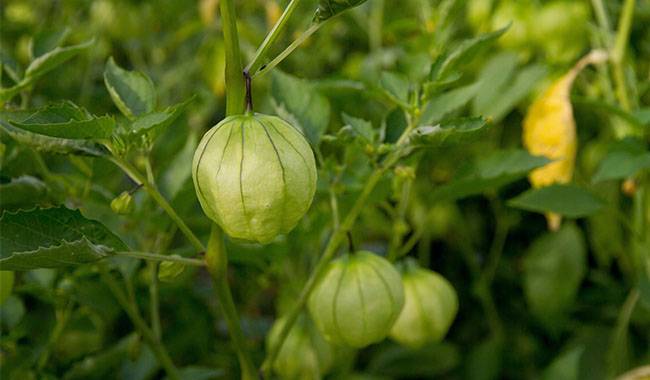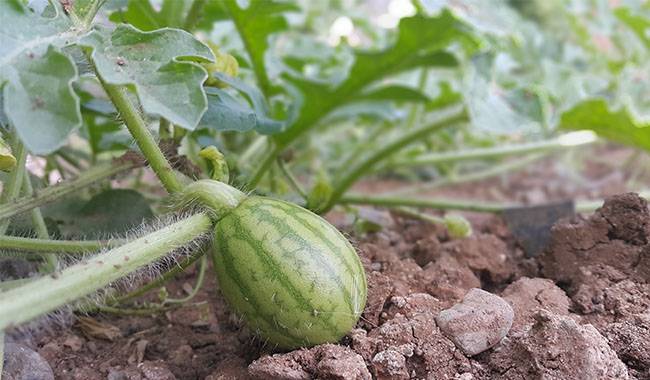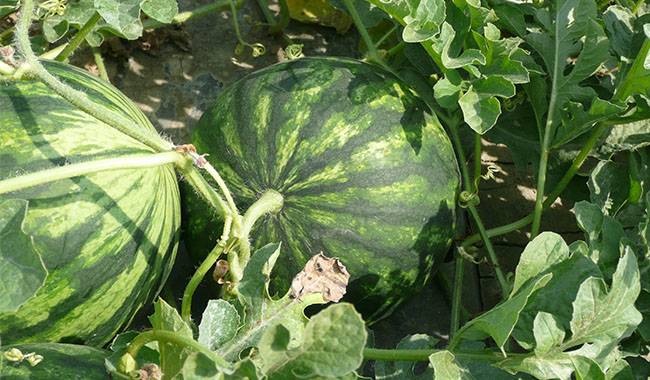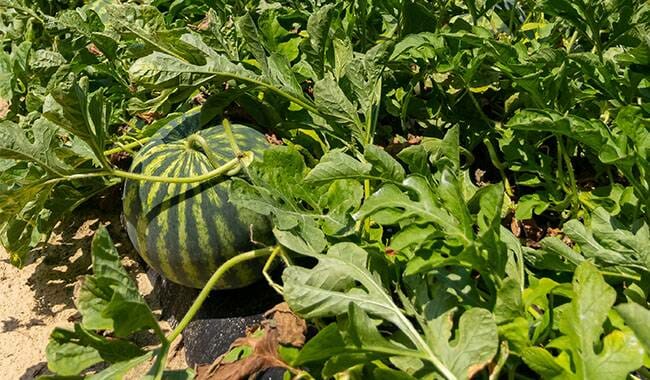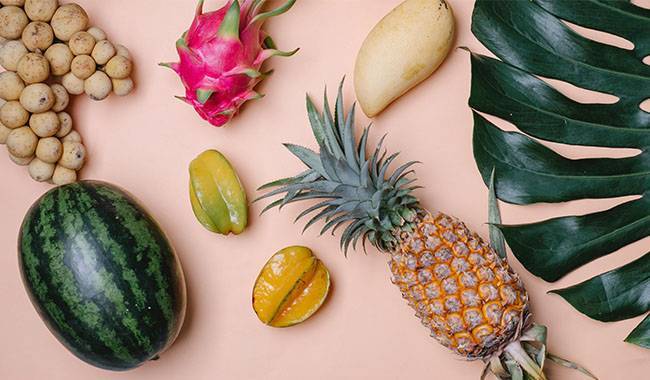
Watermelons and melons are usually grown separately from other plants – in a specially designated area called a gourd (from the Persian word “bāğčä” – “garden”). Usually, they are combined with each other, but other neighbors usually do not choose them because of the strong stem growth.
However, watermelons and melons can have reliable neighbors, which will help to avoid problems in the cultivation of these crops. In this article, I will tell you what are watermelon companion plants can protect watermelons and melons from pests and attract beneficial insects.
HOW CAN COMPANION PLANTS HELP WATERMELONS?
Melons and watermelons grow well in well heated and fertile soils and are considered to be relatively unpretentious plants.
However, they often suffer from many pests such as melon flies, squash flies, whiteflies, various beetles, and nematodes.
Of course, the use of specialized chemicals can get to the root of these problems, but many gardeners prefer to grow their plants using organic farming methods.
In this case, you can resort to “biological weapons”, an important part of which is to accompany the plants.
The cultivation of suitable neighbors in the melon or watermelon patch is mainly beneficial in attracting beneficial insects.
Among them are those that actively feed on pests, and those that pollinate the flowers of watermelons and melons, helping to increase the number of ovaries and thus the yield of melons.
Suitable neighboring plants can deter voracious pests from attacking melons and can also take a beating for themselves.
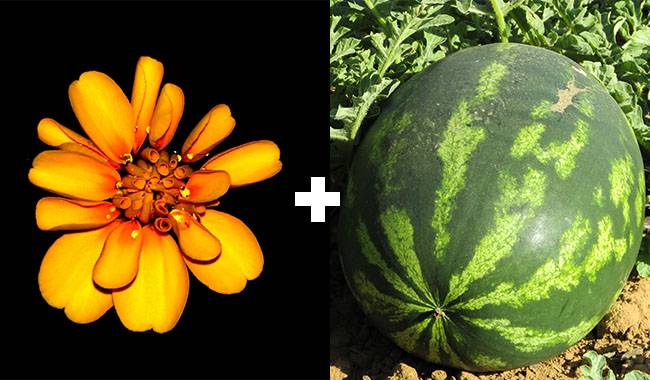
USEFUL FLOWERS FOR WATERMELONS
Beautiful flowering companion plants, annual and perennial flowers, can not only add attractiveness to your vegetable garden but also help protect watermelons and melons from pests.
Some flowers have other beneficial qualities for melons in addition to their decorative value.
They can attract beneficial insects or repel typical watermelon pests. That is why they should be planted together with watermelons, melons, and even pumpkins. Which flower is the most beneficial in this case?
Golden Lotus
Based on the observations of experienced gardeners, nasturtiums would be an excellent choice for planting next to melons and watermelons. These bright, cheerful flowers have many “uses”.
For one thing, the strong, special scent repels leaf-eating insects that might damage members of the pumpkin family.
In addition, they attract predatory insects (such as creating suitable habitats for spiders and some beetles) that feed on pests that damage watermelons and melons.
They also inevitably attract bees due to the colorful flowers in melon fields. In addition, nasturtiums can be successfully used as live traps for melon aphids.
Since the juicy leaves of nasturtiums attract aphids, they prefer to settle in the nasturtium bushes and ignore the watermelons and melons growing nearby.
As an added bonus, you may notice that nasturtiums are edible and can be used as a colorful and tasty addition to salads and soups.
The pickled, unripe fruits are a primitive snack – chili peppers.
Nasturtium flowers come in many different varieties and colors – from eye-catching multicolored to understated pink.
There are even large specimens and varieties with variegated foliage. The shrubs also vary in shape. Both shrubby and climbing forms are available for planting in the garden.
Marigold
Various kinds of marigolds planted next to watermelons and other melons attract beneficial insects that control the pest population of watermelons and melons and scare away pests (stink bugs, melons, etc.).
The most fragrant marigolds are the most effective. Therefore, the selection of melon varieties should not be guided by external attractiveness, but by the intensity of their specific aroma, which is strongest in varieties that are close to the original variety.
Marigolds not only protect melons from ground pests, but also from leaf-eating and sucking insects.
In horticulture, marigolds are valued for the substances produced by their roots that kill underground pests. Marigolds are most effective in reducing nematode populations after growing on carpets for two months prior to planting watermelons and melons.
If the climate is not suitable for these conditions, then marigolds can be planted in the area the previous season in the presence of nematodes.
The strongest fragrances in the leaves are rejected marigolds and thin-leaved marigolds. They independently form sturdy branching shrubs that, when planted closely, form a reliable barrier around watermelons and melons.
Another valuable quality is the many bright inflorescences-garden decorations and magnets that pollinate insects on melons.
Attracting pollinators to the flowers of melon plants
Attracting pollinators to areas where watermelon grows is particularly important because watermelon flowers are not particularly attractive to pollinating insects.
Plants planted immediately afterward with fragrant and colorful inflorescences that bloom at the same time as watermelon flowers can be effective in attracting pollinating insects and indirectly promote pollination of watermelons and melons.
For example, to attract pollinating insects, straight teeth can be planted along the edges of melons, or such tall flowers can be planted between watermelons and melons: sphagnum, larkspur, cosmos, chicory, a golden chrysanthemum, etc.
It also effectively attracts beneficial insects such as echinacea, heliotrope, and strawberry.
Sunflower
Sunflowers are another good watermelon companion for melons. These huge plants can take on the role of lightning rods because, like the golden lotus, they attract aphids, deflecting them from the main culture.
Sunflower seeds are a favorite of almost all small birds. Attracted by sunflowers, they will destroy insects on both watermelons and melons growing next to the sunflower.
Sunflowers come in a variety of colors, shapes, and sizes – from tall to short. Florists may be interested in sunflower varieties in unusual colors.
For example, two-color, almost white, and crimson sunflowers. As an unpretentious annual, they can grow in a variety of climates.
Alyssum
Common aster is not the most attractive plant that most often grows in grasses and forms large patches.
As you know, aster is poisonous to livestock, but it is also very effective in repelling ants (resident aphids), and various beetles (including Japanese beetles) that can seriously damage watermelons and melons.
It is believed that aster, which grows with sunflowers, can stop the spread of flying insects and even repel mice.
When growing this plant on melons, it is important to remember that aster can be aggressive and turn into a vicious weed.
If you decide to try using asters as companions for watermelons and melons, try planting them in containers dug out with melons, preferably cutting off the faded aster inflorescences to avoid self-seeding.
Alyssum is a perennial plant that overwinters in Middle Lane.
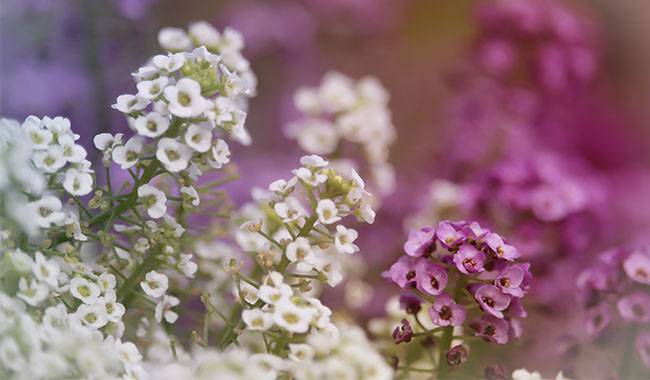
VEGETABLES AND WATERMELONS
Many vegetable or herbaceous plants have proven to be very valuable companions for watermelons and melons.
Of course, they do not have the same decorative effect as brightly colored flowers, but it is recommended that they be planted next to pumpkins.
Radish is an excellent companion for watermelons and other members of the pumpkin family. It inhibits bed bug attacks and can be an effective “live trap” for flea beetles.
Spicy herbs – basil, mint, oregano, peppermint, fennel, and borage (borage) – can control pests and attract beneficial insects, in addition to being widely used in cooking.
Tomatoes are also good neighbors to melons and kumquats. Tomatoes have a specific odor that eliminates pests: moths, melon aphids, sawflies, etc.
Growing watermelons and tomatoes in greenhouses or outdoors has a positive effect on the growth of both crops.
In addition, watermelons and melons grow well next to peppers because they prefer similar growing conditions and do not compete with each other.
HOW TO GROW COMPANION PLANTS ON WATERMELON?
Climbing melons and watermelons need a lot of space to grow and spread their strong stems.
In this respect, growing companion plants on melons are not easy. Compact marigolds or other short flowers or herbs can be planted as borders around the edges of melons.
They will then create an effective fence while making companion plants.
A few radishes planted in the watermelon bed between the plants and a bush of marigolds or goldenrod will also provide additional protection.
But at the same time, it is important to make sure that the whips do not cover the low bushes and deprive them of sunlight.
CAN WATERMELON AND MELON BE GROWN TOGETHER?
There are no serious contraindications to the combined cultivation of watermelons and melons. Both crops have roughly the same requirements for growing conditions.
They must be provided with an open, sunny place and sufficiently fertile soil. Although watermelon prefers loose soil and less watering, this is usually not important.
Watermelons and melons belong to the same family, but possible cross-pollination does not affect the quality of the first year’s fruit.
As for seeds obtained from co-growing plants, opinions about the possibility of heterogeneous pollination are divided. However, in any case, hand pollination is preferable in order to preserve all the varietal qualities of watermelon or melon.
Both are spread by long shoots, so it is very important to keep a certain spacing (about 1x1cm or 1.5×1.5cm between the holes) when growing plants, and then they blend well with each other.




